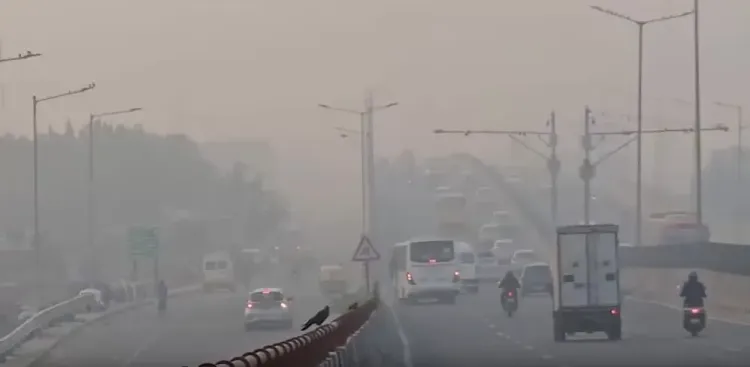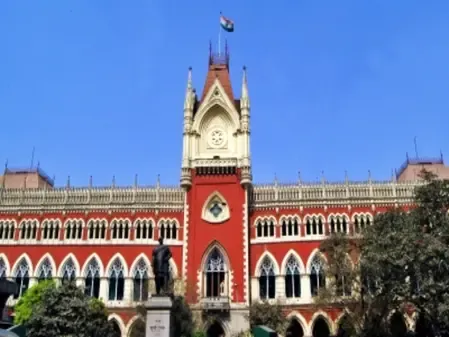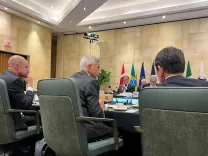Is Toxic Smog Still Engulfing Delhi with AQI Above 400?

Synopsis
Key Takeaways
- Delhi's air quality is classified as severe with AQI above 400.
- Government has implemented hybrid learning for Class 5 students.
- Prolonged exposure to high pollution can lead to health issues.
- Various regions in Delhi report dangerous AQI levels.
- Authorities are urged to submit pollution control reports.
New Delhi, Nov 12 (NationPress) The air quality in the national capital continues to be classified as ‘severe’ on Wednesday, with the Air Quality Index (AQI) remaining above 400 for a third consecutive day. A dense layer of smog once again blanketed various regions of Delhi, diminishing visibility and leaving numerous residents struggling for clean air.
Data from the Central Pollution Control Board (CPCB) revealed that the Geeta Colony–Laxmi Nagar Road area registered an AQI of 413 on Wednesday morning. The vicinity of India Gate and Kartavya Path was also shrouded in thick, harmful smog, with AQI levels reaching 408.
Other city areas reported similarly alarming figures: 431 in Alipur, 438 in Anand Vihar, 439 in Ashok Vihar, 449 in Chandni Chowk, 422 in Dwarka Sector-8, 433 in ITO, 446 in Jahangirpuri, 432 in RK Puram, and 442 in Rohini. Experts have cautioned that prolonged exposure to such elevated pollution levels can lead to severe respiratory and cardiovascular issues.
To address the worsening air quality, the Delhi government has implemented hybrid learning for students up to Class 5 starting Wednesday. This decision follows the activation of the Graded Response Action Plan (GRAP) – Stage 3 measures across Delhi and the National Capital Region (NCR).
Delhi Chief Minister Rekha Gupta stated on Tuesday, “Safety measures are being executed promptly under GRAP Phase-3. From Wednesday, classes for up to Class 5 will shift online. The hybrid model will remain active in schools.”
The Delhi Education Department issued a circular directing that “All government, government-aided, and unaided recognized private schools under the Education Department, NDMC, MCD, and Delhi Cantonment Board must conduct classes for students up to Class 5 in a hybrid format — both in-person and online (where feasible) — effective immediately until further notice.”
Director of Education Vedita Reddy emphasized, “All school heads must promptly inform parents and guardians about these new arrangements.”
Meanwhile, Union Environment Minister Bhupender Yadav instructed officials from states and union territories with offices in Delhi-NCR to submit comprehensive reports on pollution control measures during a review meeting evaluating the situation in the national capital region.









